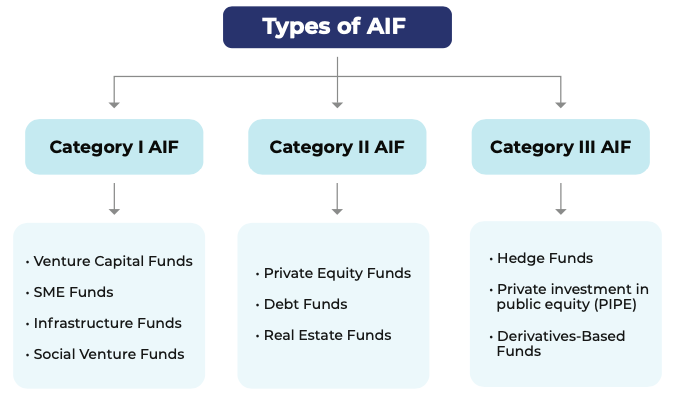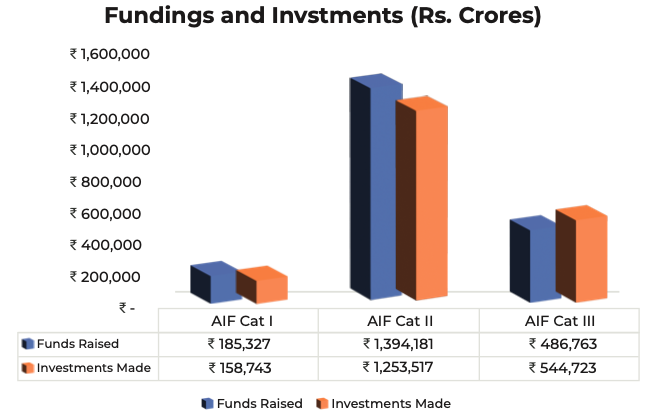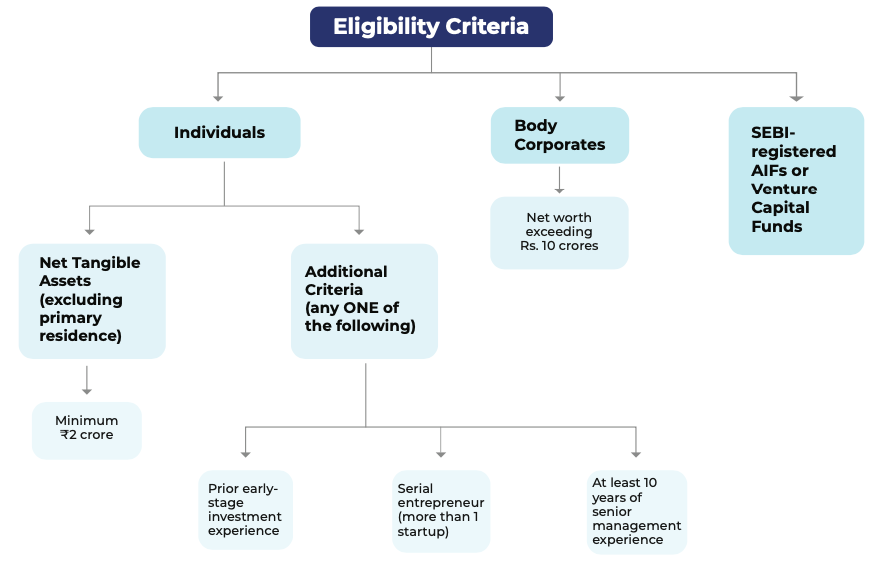In June’25 edition of our newsletter, we discussed broadly about what Alternative Investment Funds are, the definition, the structure, who should invest, the pros and the cons and its growing relevance in India’s evolving investment landscape. Building on that understanding, this month we shift our focus to the three distinct categories of AIF. Understanding these categories is essential for investors, fund managers and advisors, as it forms the basis for strategy selection, compliance, and capital allocation.
Overview on Categories of AIF

Data relating to activities of Alternative Investment Funds (AIFs)
The chart below highlights funds raised and investments made by each of the categories for financial year ending 31st March, 2025.

Let’s understand the categories of AIF in detail.
Category I AIF
Like we discussed in our earlier edition, Category I AIFs play a pivotal role in nation-building by directing capital towards sectors that are socially or economically desirable in the long run. These funds are encouraged by SEBI through favorable regulations and tax incentives.
1. Venture Capital Fund
- These funds primarily invest in early-stage startups or companies with high growth potential.
- By providing critical capital at formative stages, Venture capital Funds, VCFs help fuel innovation, entrepreneurship, and job creation across emerging sectors that are vital to India’s economic development.
2. Angel Fund
- Angel Funds operate as a specialized subset of VCFs under Category I AIFs.
- These funds specifically raise capital from eligible angel investors, offering critical seed or pre-seed stage financing to startups often still in their idea or validation phase. It also extends support to later-stage startups during their growth phases.
- Beyond capital, angel investors often provide strategic guidance, mentorship, and market insights that help young ventures build a sustainable foundation.
- The minimum investment from each investor is ₹25 lakhs, which can be accepted over a maximum period of three years.
Eligibility criteria for an Angel Investor:

- 3. SME Funds
These funds focus on small and medium enterprises (SMEs), which form the backbone of India’s economy. - By providing essential growth capital, SME Funds help businesses expand their operations, improve competitiveness, and generate employment opportunities across key sectors.
4. Social Venture Funds
- These funds provide capital to enterprises that aim to tackle significant social or environmental issues while operating as commercially viable businesses.
- Their investments are typically directed towards sectors such as affordable healthcare, quality education, clean energy, and financial inclusion.
- Although the core emphasis is on creating measurable social impact, these funds also aim to generate steady financial returns for investors.
5. Infrastructure Funds
- These funds allocate capital to large-scale infrastructure projects across sectors such as transportation, energy, water, and urban development.
- Given the capital-intensive and long-gestation nature of such projects, Infrastructure Funds are best suited for investors with a long-term investment horizon.
Category II AIF
Category II AIFs include those that do not fall under Category I or III and typically avoid speculative trading or complex leveraging strategies. These funds offer a middle ground for investors by targeting companies with strong fundamentals that require capital for expansion, restructuring, or long-term growth. As per SEBI regulations, Category II AIFs are prohibited from using leverage for investment purposes, except for temporary borrowing to manage operational requirements. Common examples include private equity funds, debt funds, real estate funds, and distressed asset funds. Let’s have a closer look at each one of these.
1. Private Equity
- Private Equity (PE) Funds focus on investing in privately owned companies that are not traded on public stock exchanges but hold strong potential for growth and value creation.
- These funds typically provide capital to support business expansion, operational restructuring, or strategic acquisitions.
- PE investments play a critical role in driving corporate transformation and market competitiveness.
- However, they are generally long-term commitments, often spanning four to seven years, and are considered illiquid.
- While the potential for substantial returns exists, private equity demands patience and a high-risk appetite.
2. Debt Fund
- Debt Funds invest primarily in structured debt instruments such as bonds, debentures, or other fixed-income securities issued by unlisted companies.
- These funds aim to generate higher returns compared to traditional debt products like fixed deposits or government bonds.
- However, the associated credit risk is also higher, particularly when dealing with companies that face challenges in accessing conventional bank financing.
- As per SEBI regulations, these funds are not permitted to engage in direct lending and must invest through capital market instruments.
3. Real Estate Funds
- Real Estate Funds channel investments into residential, commercial, or multi-purpose development property, providing investors with an opportunity to participate in the real estate sector without directly owning physical property.
- These funds are commonly used by investors seeking exposure to property markets for capital appreciation or rental income, while benefiting from professional fund management and diversification across projects.
Category III AIF
When talking about Category III AIFs, we move into the most aggressive and high-risk segment of the Alternative Investment Fund space. These funds are specifically designed for sophisticated investors with a high-risk appetite, seeking the potential for enhanced returns through complex, actively managed strategies. Unlike Category I and II AIFs, Category III funds are permitted to use leverage and derivatives to amplify returns, making them suitable only for those with a deep understanding of market dynamics.
Common Fund Types under Category III AIFs include -
1. Hedge Funds
- Hedge Funds employ a wide range of dynamic, actively managed strategies to generate returns, often independent of overall market direction.
- While hedge funds offer significant return potential, they are highly complex, use leverage, and carry elevated risk, making them suitable only for experienced investors.
2. Private Investment in Public Equity (PIPE) Funds
- PIPE Funds provide capital to publicly listed companies through private, negotiated transactions, typically at a discount to prevailing market prices.
- These investments offer companies faster access to funding compared to traditional public offerings, often without the regulatory burden or market volatility associated with public capital raises.
- For investors, PIPE deals present an opportunity to acquire equity at favourable terms, with the potential for strong returns if the company demonstrates future growth.
- However, success depends heavily on careful deal structuring and the financial strength of the target company.
3. Derivative Based Funds
- Derivatives-Based Funds utilise instruments such as futures, options, and other structured products to implement advanced trading strategies.
- The aim here is generating profits from price fluctuations, volatility, or market inefficiencies.
- These funds are often used to hedge downside risks or to generate alpha through tactical positioning.
- However, given the complexity and leverage inherent in derivatives, such strategies can amplify both gains and losses, making these funds highly sensitive to market shifts and suitable primarily for sophisticated investors with a strong risk tolerance.
Disclaimer:
Understanding the three categories of AIFs is essential for making informed investment decisions. Each category serves a distinct purpose — from fostering early-stage innovation and infrastructure growth to enabling long-term capital appreciation and advanced market strategies. As AIFs continue to gain traction in India’s evolving investment landscape, clarity on their structure and objectives will be key for investors aiming to align opportunities with their risk-return profile. Given the complexity and regulatory nuances involved, seeking advice from qualified professionals is strongly recommended.
Sources: SEBI AIF FAQs, SEBI Reports and Statistics.

